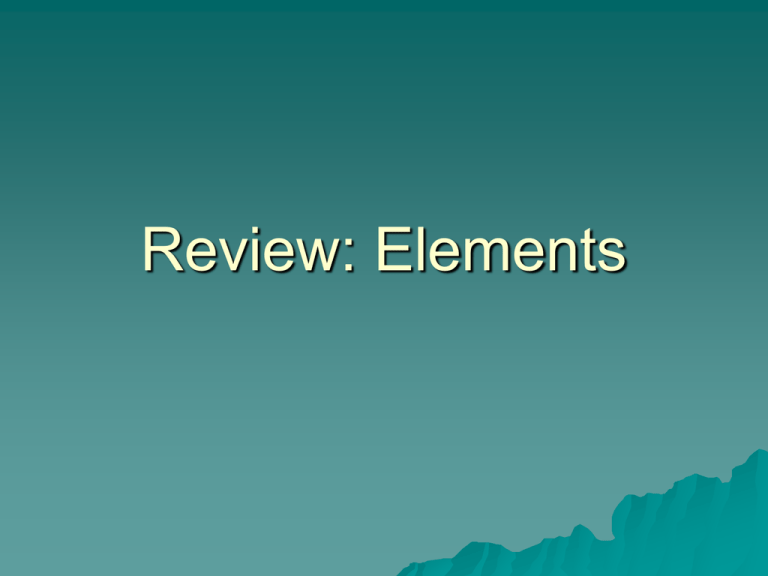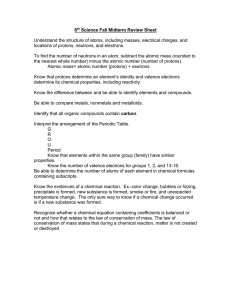Elements
advertisement

Review: Elements Elements A pure substance made up of only one type of atom. Every known element is listed on the periodic table. Examples: sodium and oxygen Physical Properties Any feature of a substance, such as an element, that can be OBSERVED or MEASURED. Examples: Colour State (solid, liquid or gas) Lustre (shiny or dull) Boiling Point Physical Properties of Sodium Colour? Silver State? Solid Lustre? Shiny Boiling Point? 883°C Chemical Properties Describe how substances, such as elements, will BEHAVE when in contact with another substance. Examples: Reactivity with oxygen Combustibility Reactivity with water Chemical Properties of Sodium Reactivity with water? Reactivity with oxygen? reactions of alkali metals Sodium turns white Combustibility? Catches on fire very easily Atoms The smallest unit of an element Made up of sub-atomic particles. Sub-atomic Particle Proton Electrical Charge Symbol Location + p+ Nucleus Electron - e- Around the nucleus Neutron Neutral (no charge) n0 Nucleus Look at the Periodic Table!!! Protons = Atomic Number Electrons = Atomic Number Neutrons = Atomic Mass – Atomic Number ATOMIC NUMBER ATOMIC MASS Atoms of Sodium Protons = Atomic Number Electrons = Atomic Number Neutrons = Atomic Mass – Atomic Number ATOMIC NUMBER Protons = 11 Electrons = 11 Neutrons = 23 – 11 ATOMIC MASS = 12 Bohr – Rutherford Diagrams Diagram of an atom Remember: Nucleus: Protons and Neutrons Around the nucleus in shells: Electrons 1st shell: 2 electrons max 2nd shell: 8 electrons max 3rd shell: 8 electrons max B-R of Sodium P = 11 E = 11 N = 23 – 11 = 12 VALENCE SHELL P = 11 N = 12 VALENCE ELECTRONS = 1




